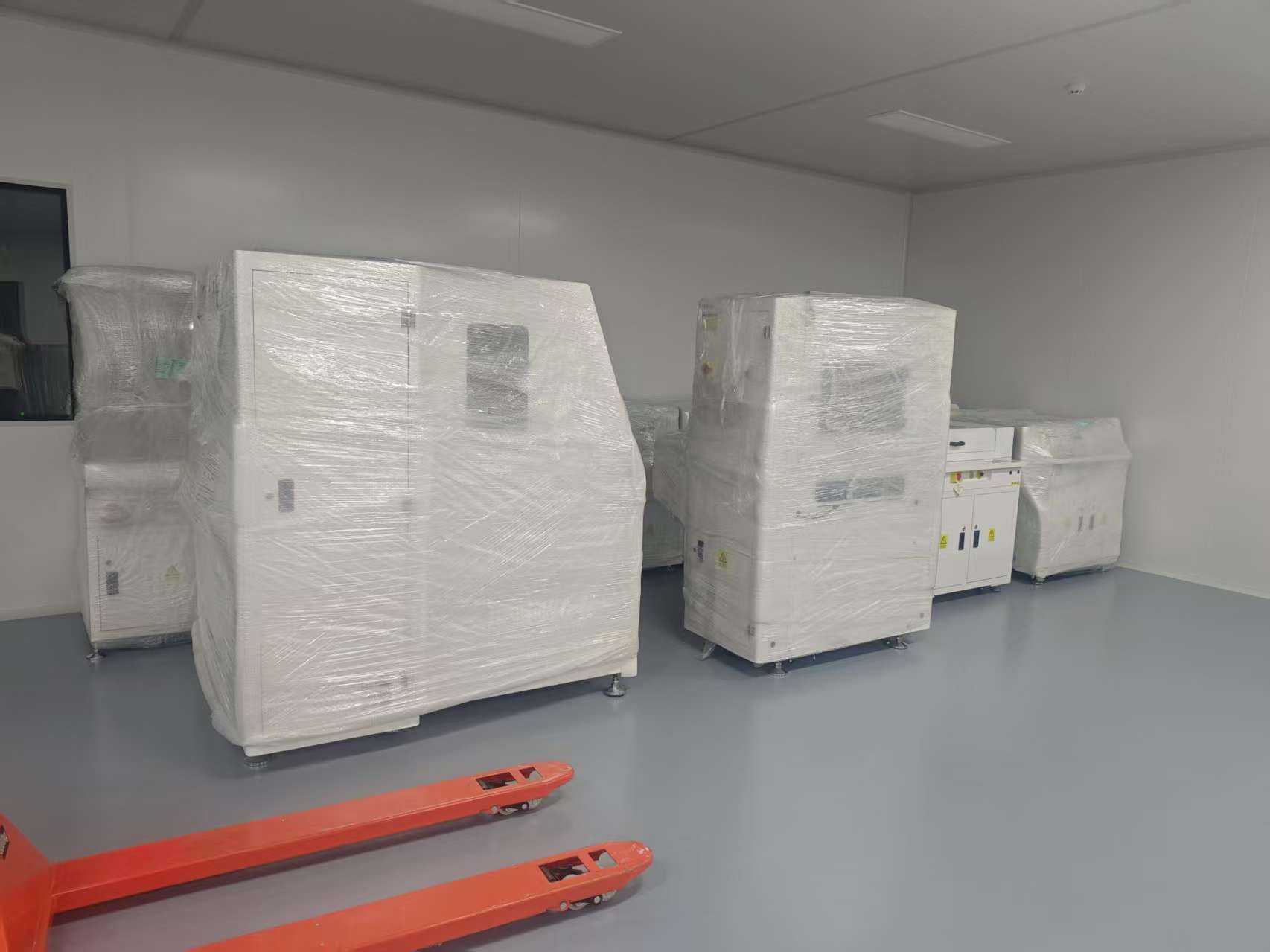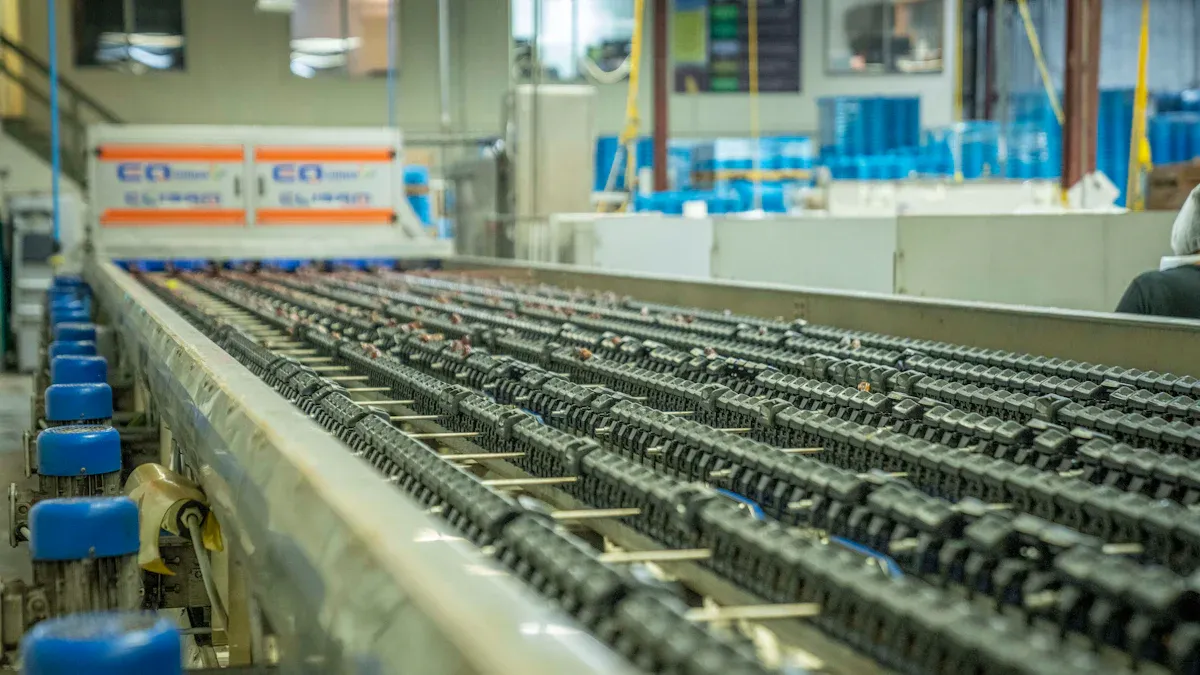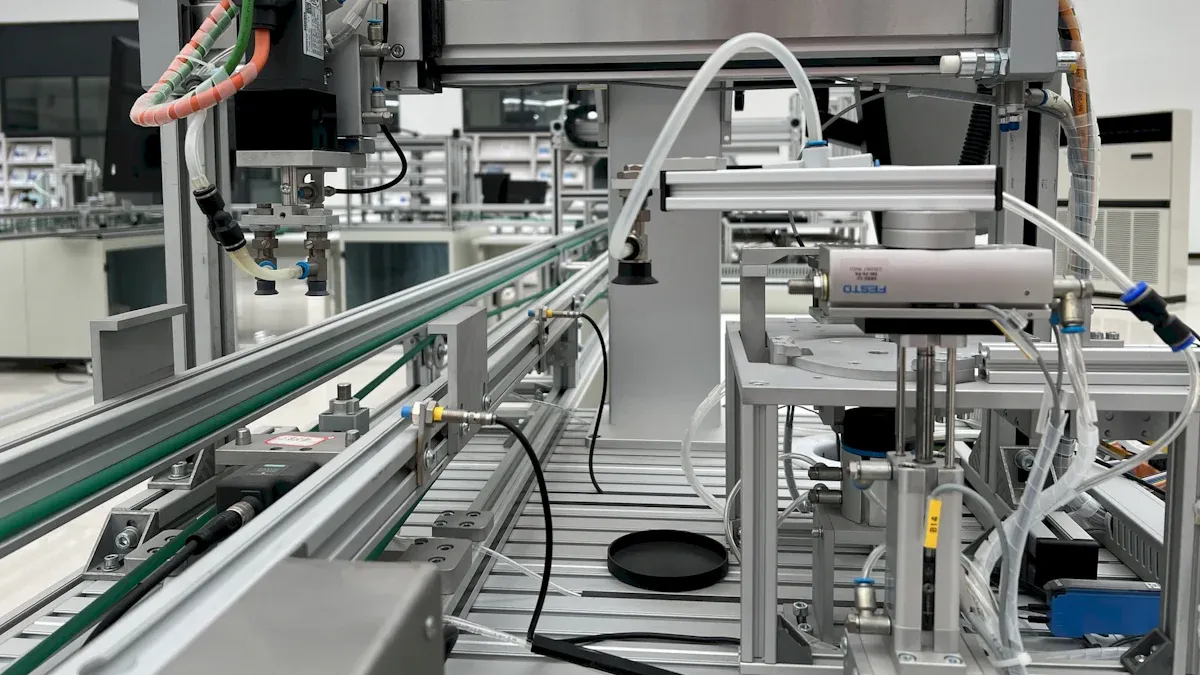
You want the best solution for your SMT line. If you need to prevent bottlenecks and keep production steady, a Buffer Conveyor often works better. Your choice depends on production needs, efficiency, cost, space, flexibility, and reliability. Think about your biggest challenges and what goals matter most to your operation.
Key Takeaways
-
Buffer conveyors are ideal for preventing jams and maintaining a steady production flow. They store PCBs temporarily, which helps keep your SMT line running smoothly.
-
Shuttle conveyors offer flexibility for moving PCBs between different machines. They are best for high-mix, low-volume production where frequent product changes occur.
-
Consider your available space when choosing a conveyor. Buffer conveyors are compact and fit into tight spots, while shuttle conveyors require more room for movement.
-
Evaluate your budget carefully. Buffer conveyors typically have lower upfront costs and maintenance needs compared to shuttle conveyors.
-
Regular maintenance is crucial for both conveyor types. Buffer conveyors are easier to maintain due to fewer moving parts, ensuring consistent performance.
Comparison
Key Differences
You need to understand how Buffer Conveyor and shuttle conveyor work in your SMT line. The table below shows the main differences. This helps you see which option fits your needs.
|
Feature |
Buffer Conveyor |
Shuttle Conveyor |
|---|---|---|
|
Main Function |
Stores PCBs temporarily |
Moves PCBs between lines |
|
Layout Impact |
Simple, linear |
Flexible, multi-route |
|
Space Requirement |
Compact |
Needs more space |
|
Cost |
Lower upfront cost |
Higher investment |
|
Reliability |
High, fewer moving parts |
Depends on complexity |
|
Maintenance |
Easy, less frequent |
Needs regular checks |
|
Throughput |
Smooth flow prevents jams |
Fast routing, high speed |
Tip: Use this table to match each conveyor type to your production goals.
Best Uses
You want the right conveyor for your SMT line. Each type is best suited for specific scenarios.
-
Choose Buffer Conveyor if:
-
You need to prevent jams between machines.
-
Your line often stops and starts.
-
You have limited floor space.
-
You want a simple, reliable solution.
-
-
Choose the shuttle conveyor if:
-
You want to connect multiple lines or machines.
-
Your layout changes often.
-
You need to route PCBs to different equipment.
-
You aim for high throughput and flexible production.
-
If you run a high-mix, low-volume line, shuttle conveyors help you adapt quickly. For steady, high-volume production, Buffer Conveyor keeps your flow smooth.
Buffer Conveyor

Production Flow
You want your SMT line to run smoothly without interruptions. A buffer conveyor helps you achieve this by providing temporary storage for PCBs between machines. This storage keeps your production moving, even if one machine slows down or stops for a short time. You avoid jams and keep your line balanced.
-
Buffer conveyors provide temporary storage for PCBs, which helps maintain a continuous production flow.
-
They reduce bottlenecks in the production process, enhancing overall efficiency.
-
The integration of intelligent queue management optimizes the order of processing based on production requirements.
In high-mix, low-volume environments, a buffer conveyor becomes even more important. It stores boards between assembly stages, so you do not have to stop the entire line if one process takes longer. This function keeps your production efficient and reduces the risk of bottlenecks.
Note: If you want to keep your SMT line running at peak efficiency, consider adding a buffer conveyor to smooth out transitions between machines.
Space and Cost
You often need to fit new equipment into limited floor space. Buffer conveyors offer a compact solution. You can customize their length to match your production needs, so you do not waste valuable space. Many users prefer machines that occupy less space, and buffer conveyors meet this requirement.
-
SMT conveyors are customizable in length to fit specific production needs.
-
They occupy reasonable space, which is a concern for many users.
-
Users often seek machines that occupy less space, indicating a preference for compact designs.
-
PCB buffers can be customized in size to meet operational requirements.
-
They help in adjusting the pace and temporarily storing boards, which can prevent production stoppages.
-
This adaptability is crucial for effective buffering and sorting in SMT production lines.
When you compare costs, buffer conveyors usually have a lower upfront price than more complex systems. You save money on both the initial purchase and ongoing operation. Their simple design also means fewer breakdowns, which reduces repair costs over time.
Maintenance
You want reliable equipment that does not require constant attention. Buffer conveyors have fewer moving parts than other conveyor types. This design makes them easy to maintain. You spend less time on repairs and more time producing quality products.
Routine checks and occasional cleaning keep your buffer conveyor in top shape. Most users find that maintenance is straightforward and does not disrupt production. You can trust a buffer conveyor to deliver consistent performance day after day.
Tip: Regular maintenance ensures your buffer conveyor continues to prevent bottlenecks and supports smooth production flow.
Shuttle Conveyor

Flexibility
You want your SMT line to adapt quickly to changes. Shuttle conveyors give you this flexibility. You can move PCBs between different stages of your assembly line. This movement lets you adjust your workflow when you change product types or board sizes. You do not need to stop production to make these adjustments.
Here is how shuttle conveyors handle different board sizes and product mixes:
|
Feature |
Description |
|---|---|
|
Shuttle Mechanism |
Moves PCBs back and forth between different stages of the assembly line, optimizing workflow. |
|
Overboard Width |
Single lane: 50–390mm; Dual lane: 50–280mm, accommodating various board sizes. |
|
Integration with Other Equipment |
Designed to seamlessly integrate with other assembly line equipment, enhancing overall efficiency. |
You can see that shuttle conveyors fit many board sizes. You can also connect them with other machines easily. This setup helps you keep your line running, even when you switch products.
Tip: If your production changes often, shuttle conveyors help you stay flexible and efficient.
Routing
You need to move PCBs between machines without damage. Shuttle conveyors transport delicate electronic components with care. Their design ensures precision and gentle handling. This feature protects sensitive items and keeps your product quality high.
You can use shuttle conveyors to create advanced routing strategies in your SMT line. These systems let you:
-
Reduce manual handling, which minimizes errors.
-
Increase production speed, leading to lower production costs.
You can also automate key processes in your SMT line. By optimizing your layout, you minimize material handling. This setup reduces the risk of errors and improves turnaround times.
Shuttle conveyors help you route boards to the right machines at the right time. You get more control over your production flow.
Throughput
You want to get the most out of your equipment. Shuttle conveyors improve equipment utilization, especially in multi-line SMT facilities. You can transfer products between lines and make better use of your production space.
Here is how shuttle conveyors boost your throughput and efficiency:
|
Feature |
Benefit |
|---|---|
|
Lateral movement capability |
Enables product transfer between multiple lines |
|
Workflow optimization |
Enhances efficiency in multi-line setups |
|
Space efficiency |
Allows for better use of production space |
You can move boards quickly and accurately. This speed increases your overall throughput. You also reduce downtime because you can reroute boards if one line slows down.
Note: Shuttle conveyors help you reach higher production targets by making your SMT line faster and more flexible.
Decision Checklist
Step-by-Step Guide
You want to make the right choice for your SMT line. Use this step-by-step guide to help you decide between a Buffer Conveyor and a shuttle conveyor.
-
Assess Your Production Flow
Look at your current SMT line. Identify where slowdowns or jams happen. Decide if you need to store PCBs temporarily or move them between different machines. -
Measure Your Space
Check the available floor space. Buffer conveyors fit into tight spots. Shuttle conveyors need more room for movement. -
Set Your Budget
Calculate your budget for new equipment. Buffer conveyors usually cost less to buy and maintain. -
Review Flexibility Needs
Think about how often you change products or board sizes. If you need to switch often, shuttle conveyors offer more flexibility. -
Consider Maintenance
Choose equipment that matches your team’s skills. Buffer conveyors require less frequent maintenance.
Tip: Write down your answers for each step. This will help you compare your options clearly.
Matching Needs
You need to match your SMT line requirements with the right conveyor system. The table below shows important factors to consider. Use it to check which system fits your needs best.
|
Factor |
Description |
|---|---|
|
Throughput rate |
How fast does your line process PCBs? Choose a system that keeps up with your target speed. |
|
Component placement accuracy |
Make sure the conveyor keeps PCBs aligned for precise component placement. |
|
PCB warpage |
Pick a conveyor that handles boards gently to prevent bending or damage. |
|
Maintenance requirements |
Select a system your team can maintain easily to avoid downtime. |
If your main goal is steady production with fewer stops, a Buffer Conveyor may suit you best. If you need to route boards to different machines or lines, a shuttle conveyor gives you more options.
Remember: The best conveyor system matches your production goals, space, and team skills.
Real-World Examples
Buffer Conveyor Success
You can see how buffer conveyors help many industries reach their goals. Companies use these systems to solve real production problems. The table below shows how different industries improved their SMT lines with buffer conveyors:
|
Case Study |
Industry |
Conveyor Type |
Implementation Goals |
Results Achieved |
|---|---|---|---|---|
|
Case Study 1 |
Food Processing |
Modular Belt Conveyor |
Increase throughput and ensure hygiene |
30% increase in speed, full compliance with safety standards |
|
Case Study 2 |
Automotive |
Overhead Conveyor |
Optimize workspace and reduce labor costs |
Reduced labor by 40%, enhanced workstation efficiency |
|
Case Study 3 |
E-commerce |
Roller Bed Conveyor |
Increase order fulfillment speed |
Order processing time cut by 50% |
|
Case Study 4 |
Pharmaceutical |
Zipper Conveyor |
Ensure product integrity and increase speed |
Achieved 99% product integrity with 25% faster processing |
You notice that buffer conveyors do more than move products. They help you boost speed, improve safety, and cut costs. For example, in food processing, a modular belt conveyor increased speed by 30%. In automotive plants, overhead conveyors reduced labor by 40%. These results show that buffer conveyors can solve many challenges in your SMT line.
Tip: If you want to improve efficiency and meet strict standards, buffer conveyors offer a proven path.
Shuttle Conveyor Success
You can also find strong results with shuttle conveyors, especially when you need flexibility. Many electronics manufacturers use shuttle conveyors to connect multiple lines. This setup lets you route PCBs to different machines without stopping production.
Imagine you run a high-mix SMT line. You need to switch products often. Shuttle conveyors let you move boards between lines quickly. You keep your equipment busy and avoid downtime. Some factories report higher throughput and better use of space after adding shuttle conveyors.
Shuttle conveyors help you adapt to changing needs. You can handle more product types and keep your SMT line running smoothly. If your production changes often, shuttle conveyors give you the flexibility you need.
You now have the key factors to choose between buffer and shuttle conveyors for your SMT line. Review your checklist and study real-world examples.
-
Verify design files and use review software to catch errors.
-
Conduct a DFM review to match your prototype with production.
-
Check PCB size compatibility, conveyor speed, and integration standards.
-
Look for durability, ease of use, and expandability in your equipment.
Consider consulting with SMT experts if you need more guidance. Careful planning helps you build a reliable and efficient SMT line.
FAQ
What is the main advantage of using a buffer conveyor in an SMT line?
You gain a steady production flow. Buffer conveyors store PCBs temporarily, which prevents jams and keeps your line running smoothly. This helps you avoid costly downtime and maintain high efficiency.
When should you choose a shuttle conveyor over a buffer conveyor?
You should pick a shuttle conveyor if you need to move PCBs between different machines or lines. Shuttle conveyors give you more flexibility and help you handle frequent product changes or complex layouts.
How much space do buffer and shuttle conveyors require?
Buffer conveyors fit into tight spaces and work well in compact layouts. Shuttle conveyors need more room for movement and routing. Always measure your available floor space before choosing.
Are buffer conveyors difficult to maintain?
You will find buffer conveyors easy to maintain. They have fewer moving parts, so you spend less time on repairs. Regular cleaning and simple checks keep them running well.
Can you use both buffer and shuttle conveyors in one SMT line?
Yes, you can combine both types. Use buffer conveyors to prevent jams and shuttle conveyors for flexible routing. This mix helps you optimize your SMT line for speed and adaptability.
